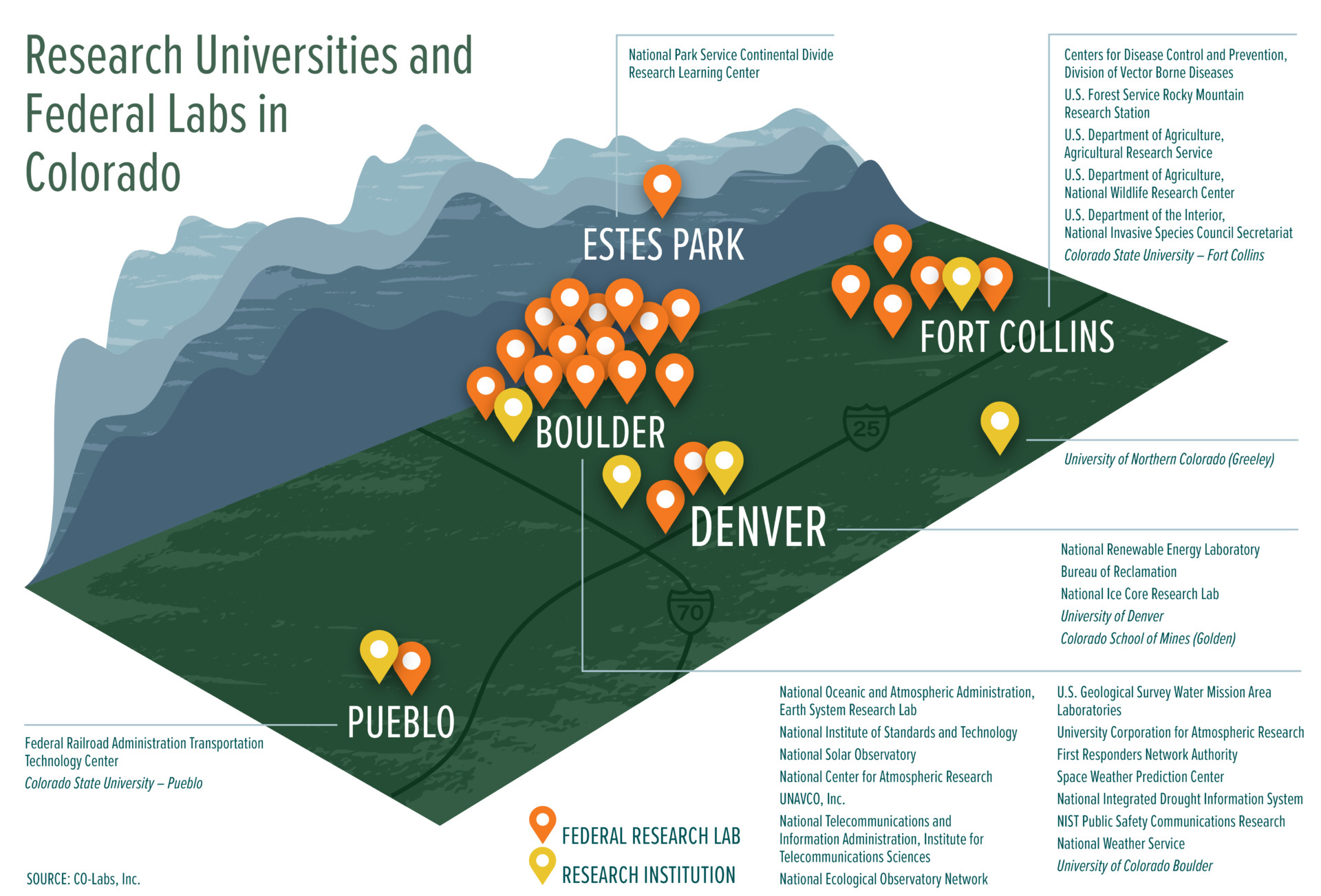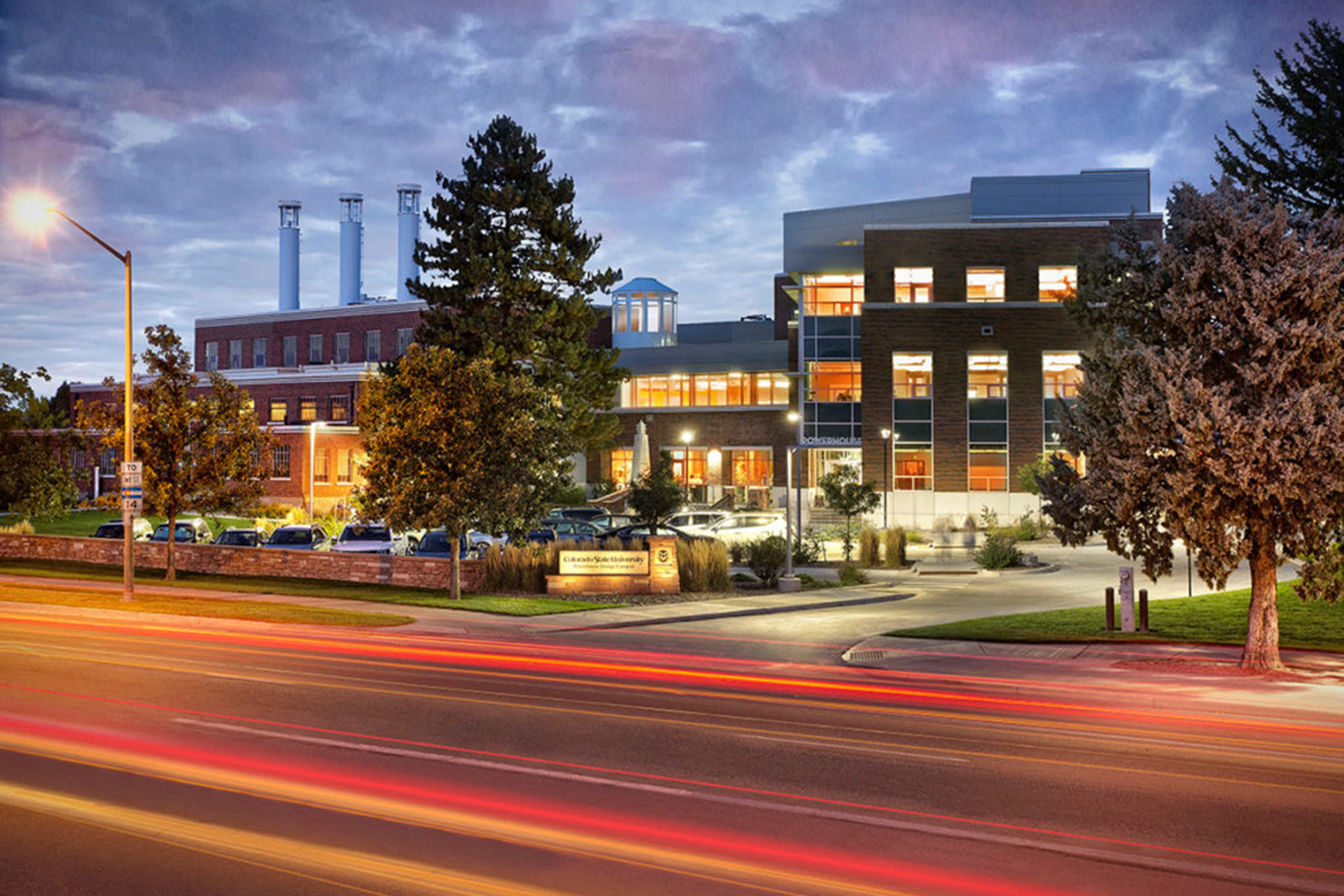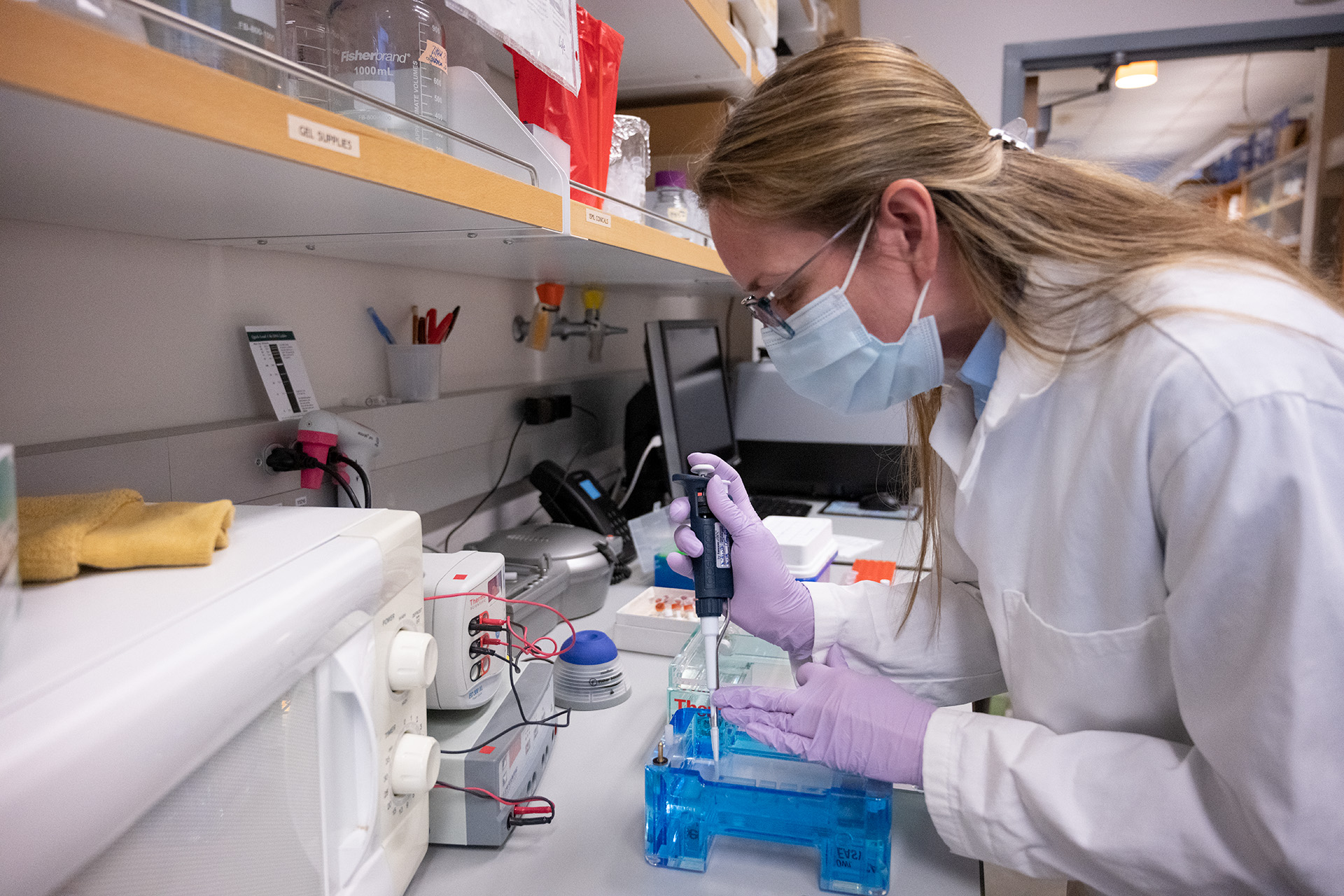Video by Ben Ward
Being overlooked can be a good thing, as Colorado has learned on its path to becoming one of the nation’s top technology hubs.
Long a region of cattle ranches and coal mines, booms and busts, this was a state that money flew over on its way to Boston or Seattle or San Francisco.
That’s changing rapidly. Today, the Front Range has emerged as a technopole. From Fort Collins to Denver to Colorado Springs, a collective of big research universities including Colorado State University, government laboratories, military bases and supportive state and local governments have merged into a technology innovation ecosystem.
DARPA, the Defense Advanced Research Projects Agency, has taken notice. On Aug. 30-31, the DARPA Forward conference series kicks off at CSU, the first of six such meetings across the United States. About 400 government officials, entrepreneurs, scientists, business leaders and military officials will convene at the Lory Student Center, seeking to advance disruptive technologies.
‘Ideas we never hear’
“In our search for transformative solutions, what we worry most about are the ideas we never hear,” said DARPA Director Stefanie Tompkins. “Ultimately, our goal with DARPA Forward is to reach more ideas, connect with more talent, and generate more surprises, and CSU’s role as a connector and catalyst in the Mountain West is key to our success.”
DARPA is the Department of Defense’s research arm. For more than 60 years, the agency has played a leading role in producing new technologies to protect national security; many civilian systems, from the internet to advanced materials to high-speed electronics, originate with DARPA.
“Colorado is a place people recognize as an innovation hub,” said former Gov. Bill Ritter, director of the Center for the New Energy Economy at CSU. “There is a spirit of innovation, of working together. There are many national government research laboratories here, working with amazing universities, and with industry. There are not a lot of places that do this, and do it as well as we do in Colorado, and we do it much better than 10 or 15 years ago, so people are looking at Colorado differently.”
A pioneering culture
Self-reliance born of isolation is the heart of Colorado’s new knowledge-based economy.
Far from East and West coast population centers, Coloradans learned to rely on each other since the first wagon trains. Scrappy risk takers, they stuck together to survive, explained CSU Vice President for Research Alan Rudolph, a former DARPA project manager.
“The pioneering culture of the region is palpable,” Rudolph said. “This is a culture that grew up knowing if we didn’t work together, we wouldn’t thrive. The culture of innovation is embedded in who we are in the region. It’s an important ethos for how this story began.”
President Lincoln signed the Morrill Act 160 years ago, taking land that once belonged to Native Americans to create land-grant universities, including CSU. The institutions are mandated to work with local communities and apply knowledge to real-world solutions.
“The pioneering culture of the region is palpable. This is a culture that grew up knowing if we didn’t work together, we wouldn’t thrive. The culture of innovation is embedded in who we are in the region. It’s an important ethos for how this story began.”
— CSU Vice President for Research Alan Rudolph
Said Ritter: “The virtue of CSU is that it fixes big problems. They are the problem solvers, the fixers.”
Beyond CSU, the University of Denver, Colorado School of Mines, CU Boulder, University of Northern Colorado and the School of Medicine at the CU Anschutz Medical Center were established. The universities gave businesses access to some of the best minds in the country, discoveries to drive innovation, and incubators to move concepts to technologies to commercial use. The universities also churn out educated workers.
Highly educated population
In Colorado, 43% of residents have a bachelor’s degree or higher – the second best rate among all states, according to the Metro Denver Economic Development Corporation. Many graduates prefer to stay here for the lifestyle and great outdoors.
“Higher education plays a pivotal role in our growth and prosperity and competitiveness in Colorado,” said Betsy Markey, member of the CSU Board of Governors, former member of Congress and executive director of Colorado’s Office of Economic Development and International Trade. “Companies are looking for workers who are self-starters, and people with college degrees are more likely to start and own businesses and create inventions.”
It’s easy to connect the dots among growth in research, business expansion and growth of the regional economy.
Research expenditures at CSU have surged 35% over the past five years to a record $447.2 million in the last fiscal year. CU Boulder also set a research funding record last year.
The Colorado School of Public Health, a consortium of the state’s leading universities, soared to 18th position in the United States for funding from the National Institutes of Health, a $20 million increase over the previous year, according to the Blue Ridge Institute, which tracks NIH funding.
Federal labs
Big federal labs also play a key role in Colorado’s technology innovation ecosystem.
It began with the Department of Energy’s Manhattan Project, followed by a succession of labs since the 1950s when the National Institutes of Standards and Technology lab opened in Boulder. NIST advanced measurement capabilities that led to precision clocks and GPS navigation, advanced communications networks and DVD players, laser surgery and reliable gas pipelines.
In succession, dozens of other federal labs opened along the Front Range, including the National Renewable Energy Laboratory and the National Center for Atmospheric Research. In Fort Collins, the Centers for Disease Control and Prevention sited a big lab at CSU’s Foothills Campus – the only high-security biosafety lab outside the CDC’s headquarters in Atlanta – to foster collaboration between CSU and federal scientists studying infectious diseases.
Today, 34 federal research labs and consortiums dot the Front Range – the largest concentration outside of Washington, D.C.

“You have all the constituents of a techno-economic ecosystem, yet what’s needed is the glue to make it a cohesive whole,” said Chris Fall, who until recently supervised many of the federal labs as former director of the DOE’s Office of Science. “The reality is a university has only so much ability to scale technology, so you really need the private sector and government help to make it happen, to bring forces together to build a framework and work together.”
Business partnerships and startups
Enter business leaders and investors, who have joined Colorado’s technology innovation ecosystem in a big way. Alphabet Inc.’s Google, big data analytics software company Palantir Technologies Inc., HP Inc., Lockheed Martin and space technology company Maxar Technologies are among high-profile businesses clustered along the Front Range.
There are lots of startups, too, many birthed by universities.
Last year, startups in the region raised more venture funding than startups in Austin, Texas, according to CB Insights as reported in the Wall Street Journal. Denver-Boulder startups attracted roughly $5.5 billion in venture capital last year, more than twice the 2020 amount and almost four times more than in 2017 – growth rates far faster than the Silicon Valley or recent national average.
CO-Labs, Inc., a Boulder-based nonprofit group, links technologists, economists, scientists and government officials to turn lab discoveries into cutting-edge technologies and companies.
For example, CO-Labs helped scientists at CU Boulder team with researchers at CSU’s Methane Emissions Technology Evaluation Center to develop and commercialize methane-spotting laser technology. The resultant company, LongPath Technologies, Inc., uses the device to reduce the potent greenhouse gas by up to 90% at oil and gas fields in Colorado, Texas, Oklahoma, New Mexico and beyond.
Said LongPath CEO Ian Dickinson: “This company is a proof point of the collaboration between government labs, business and academia. We would not be here without that.”
In Fort Collins, researchers at CSU’s Flint Animal Cancer Center collaborated with VetDC Co. to develop the first FDA-approved cancer treatment for dogs. The drug, called Tanovea, was a result of tests to find treatments for humans; it was designed to target and attack lymphoma cells. The center is a world leader in the treatment of dogs, cats, and pets with cancer. VetDC has since been acquired by Elanco Animal Health Co., and the product is now being sold worldwide.
In Loveland, about two dozen innovative technologies have transferred from CSU’s College of Veterinary Medicine and Biomedical Sciences to Heska Corp. since the early 1990s, helping build the company’s animal healthcare portfolio. Heska manufactures, develops and sells advanced veterinary diagnostics to treat cats and dogs primarily in North America, Europe, Australia and New Zealand. The company employees more than 700 workers, many of them in Colorado, and generated $253.7 million in revenue last year.
CSU Ventures, the university’s tech-transfer arm, has launched more than 60 startup companies based on CSU technologies in the last 15 years.
Building a distinctive identity
In this go-go period, Colorado’s technology identity is beginning to emerge.
Brand distinction is key to distinguish technopoles. For instance, the Bay Area is known for microelectronics, Boston for biotechnology, Seattle for software, and Austin for machine learning and AI. Colorado’s tech identity is rooted in its history of energy, agriculture and disease prevention.
CSU’s Energy Institute and Powerhouse Energy Campus at the Poudre River and Highway 287 in Fort Collins is a beehive of collaboration. It is positioned to help Colorado transition from fossil fuel to clean energy using low-carbon fuels, renewable power and energy storage. Once a top 10 coal-producing state, Colorado is phasing out coal-fired electricity to reduce carbon dioxide emissions 80% by 2030.

CSU’s Energy Institute and Powerhouse Energy Campus is developing innovative solutions to energy and climate challenges that achieve global impact.
Institute researchers partner with Caterpillar Inc., Cummins Inc. and natural gas pipeline companies, among others, to help the oil and gas industries operate more efficiently and reduce carbon gases.
Sixteen startup companies occupy the fourth floor of Powerhouse. The institute is a key member of the Colorado Energy Research Collaboratory, a partnership of three universities and the National Renewable Energy Laboratory with a combined $1 billion in research annually.
Meanwhile, CSU Pueblo opened the Southern Colorado Institute of Transportation Technology this year, a collaboration to support expansion and development of transportation infrastructure for clean cars, railroad and intermodal transportation, self-driving vehicles and sustainable infrastructure. And Colorado Springs is vying to be the permanent home for U.S. Space Command.
“So much of this is new territory, and Colorado and the Western states are really taking the lead,” said U.S. Sen. John Hickenlooper (D-Colo.), who called CSU “the convening institution that is helping drive that change.”
Health-related advances
Disease prevention and biomedicine is another bedrock part of Colorado’s tech identity. It has long been a research strength at CSU.
CSU staked a leadership position in response to COVID-19 and preventing future pandemics, ranking among Harvard, Johns Hopkins and Oxford universities. More than two dozen research projects are in play, including developing vaccines, studying plasma of people who recovered, using individually approved treatments in cocktail form, improving virus wastewater sampling techniques and countering misinformation that thwarts public acceptance of cures.

Veterinary pathologist Amy MacNeill at the Veterinary Diagnostic Laboratories in May explores a possible vaccine for COVID-19 using poxviruses.
Key partners have joined the effort, including The Anschutz Foundation, which provided $2 million to support CSU for pandemic prevention and practical countermeasures. The Colorado Longitudinal Study, a collaboration between CSU and the CU Anschutz Medical Campus, will collect health data and biological samples from hundreds of thousands of Coloradans to explain various disease causes and effects, including COVID.
At CSU’s Foothills Research Campus, the Infectious Disease Research Center collaborates with the CDC and industry researchers studying diseases such as West Nile virus, Zika, yellow fever, dengue and drug-resistant tuberculosis. Indeed, the recent surge in NIH funding for Colorado universities is in part a response to the coronavirus crisis.
CSU’s Bio-pharmaceutical Manufacturing and Academic Resource Center, a national asset for bio-pharmaceutical companies and government agencies, helps develop and manufacture treatments, including a pan-corona vaccine for COVID called SolaVAX, which the NIH provided $3.1 million to CSU to investigate while Solaris Vaccines Inc. has it licensed for commercialization. Also at the Foothills Campus, the U.S. National Wildlife Research Center partners with CSU to prevent zoonotic disease, including SARS-CoV-2.
Dr. Matt Hepburn, who leads pandemic preparedness for the White House Office of Science and Technology Policy, said, “Colorado State University, and the surrounding communities, is a place where there’s lots of innovation and a can-do attitude for discovery and translating research into practical progress against contagious diseases and pandemics.”
Technology focused
And Colorado is at the forefront of a burgeoning agricultural technology enterprise. Startup Genome ranked the region as fifth in the world for its ag tech and food startup ecosystems in its 2022 report, as cited in ColoradoBiz Magazine. Investment in the food and agriculture technology sector is estimated at $52 billion worldwide, up 86% since 2020. More than 110 ag tech companies operate in Colorado. Key CSU contributors include the colleges of Agricultural Sciences and Veterinary Medicine and Biological Sciences, and the Center for Soil Carbon Solutions, among others.
The bottom-line results are evident: There are about 146,000 tech sector jobs of all sorts in Colorado, accounting for 15% of the state’s total economy, according to the Colorado Technology Association.
DARPA executive Tompkins said CSU was the perfect choice to kick off the DARPA Forward conference series this month.
“CSU’s centrality in the Mountain time zone put it on our initial list of potential hosts, but there were many other advantages that pushed it to the top,” Tompkins said. “We were impressed with how collaborative the universities in Colorado are, not only with each other but with more than 20 federal research organizations in the area, the local tech- and start-up community as well as established industry, and local military installations. The region’s leadership in topics as diverse as energy, quantum sciences and natural resources, is also compelling. Since its selection, CSU’s forward-leaning support throughout our DARPA Forward planning and preparation has confirmed that CSU was the perfect choice.”
So what comes next?
Colorado universities will contend for the National Science Foundation’s Regional Innovation Engines program, a new initiative to propel regional innovation ecosystems around the country. With a maximum funding amount of $160 million over 10 years, it will be the NSF’s largest research centers yet, with the goal of advancing critical technologies that address national and societal challenges, stimulate job growth and economic activity, and foster partnerships across industry, academia and government.
The NIH awarded $6.7 million to CSU for a new facility to study bats, chiefly for its expertise in the study of zoonotic diseases. The facility will be part of the Center for Vector-borne Infectious Diseases and will be located at the Foothills Campus.
The CSU Energy Institute has a lead role in the Western Inter-States Hydrogen Hub, a proposal to develop next-generation power and energy storage solutions. The states of Colorado, New Mexico, Utah, and Wyoming signed an agreement to create a regional clean hydrogen hub; the hub will compete for a portion of the $8 billion allocated in the 2021 Infrastructure Investment and Jobs Act towards four or more regional hydrogen hubs in the country.
And the debut of CSU’s Spur campus near downtown Denver this year will further spotlight science solutions for sustainability, water pollution, human and animal health, and agriculture. Spur is free to the public.